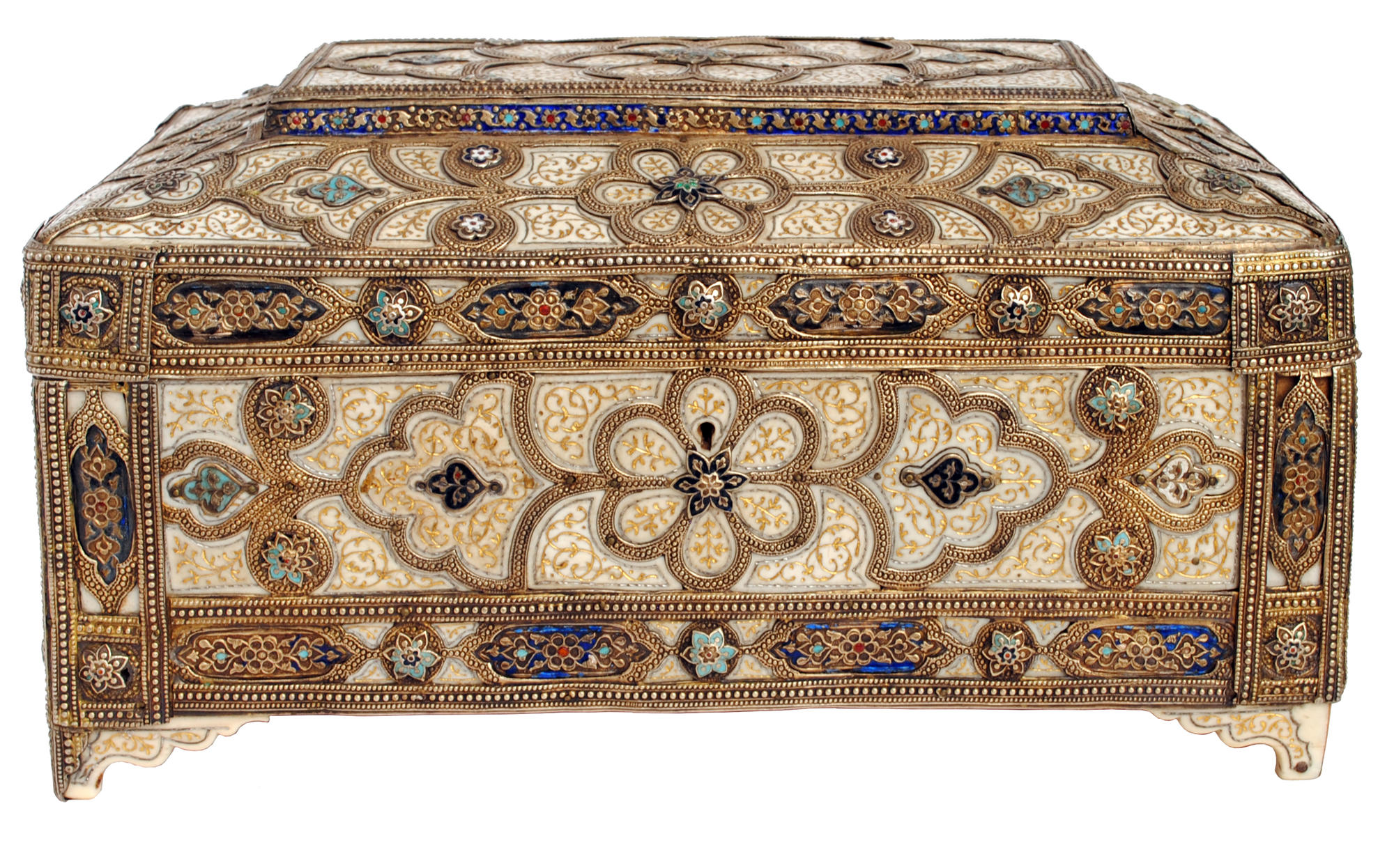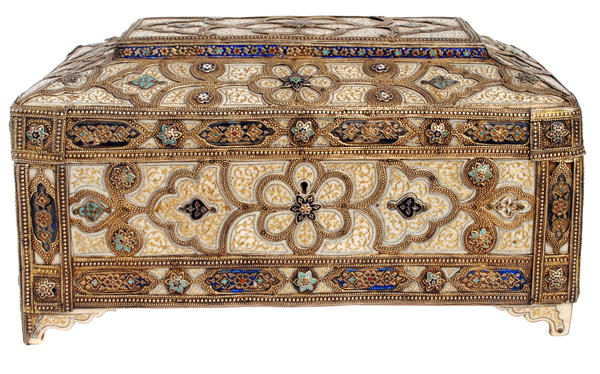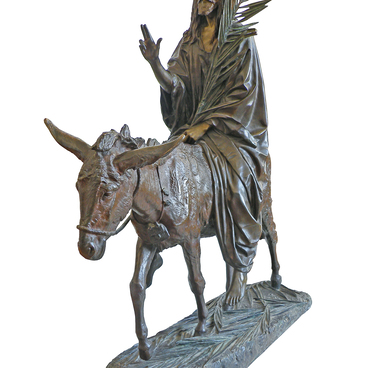For many centuries, the aul (village) of Kubachi, which is situated high in the mountains of Dagestan in the Caucasus, has been renowned for its craftsmen who make and decorate cold arms, armoury, housewares, and women’s decorations. During the Russian-Caucasian wars, Kubachi daggers were Russian officers’ favourite accessory. According to old people’s legend, it was local craftsmen who made the famous horned helmet of Alexander the Great and the shield of Prince Alexander Nevsky.
1 / 2
Jewel box
Creation period
1990
Dimensions
17х29.5х18 cm
Technique
Silver, ivory, enamel, velvet, gold inlay, pseudogranulation, carving, gilding
Collection
Exhibition
3
Open in app#1
Abdullah Tupchiyev
Jewel box
#2
#5
The jewel box from the Dagestan Museum of Fine Arts was made by Abdullah Tupchiyev (1874–1939), a famous jeweller of the late 19th and early 20th century. Abdullah and his brother Bakhmud (1868–1943) were born into the family of Kubachi jewellers, engravers, and enamellers. Their works were very well known far outside Dagestan. The brothers Tupchiyev worked in Warsaw and Petrograd and got an International Exhibition award in Paris in 1937.
Abdullah Tupchiyev made the jewel box in the 1900’s, the peak years of his artistry. The jewel box looks like a fairy tale casket. It is a very fine and skilfully made piece. The top of the jewel box is covered with ivory plates with gold inlay, a technique, which helped place a non-ferrous metal ornament on an article.
The gilded stripes are decorated with pseudogranulation, a cast pattern imitating real granulation, i. e. small balls of wire. The jewel box was undoubtedly made under the influence of Russian jewellery art, but it differs inasmuch as it is uniquely exquisite, a feature typical of Kubachi jewelers. The colour enamel makes the article bear even more resemblance to a fairy tale casket.
Abdullah Tupchiyev made the jewel box in the 1900’s, the peak years of his artistry. The jewel box looks like a fairy tale casket. It is a very fine and skilfully made piece. The top of the jewel box is covered with ivory plates with gold inlay, a technique, which helped place a non-ferrous metal ornament on an article.
The gilded stripes are decorated with pseudogranulation, a cast pattern imitating real granulation, i. e. small balls of wire. The jewel box was undoubtedly made under the influence of Russian jewellery art, but it differs inasmuch as it is uniquely exquisite, a feature typical of Kubachi jewelers. The colour enamel makes the article bear even more resemblance to a fairy tale casket.
#6
The first jewellery artel (i. e. team) appeared in Kubachi in 1924 and 36 years later grew into the Kubachi Art Factory, the largest vernacular arts manufacturer in Dagestan. For many years, Abdullah Tupchiyev remained the top-notcher of the artel; it was he who made the famous cigarette case and tea-glass holder with an enamel pattern given to Vladimir Lenin 1921.
#7
All articles made by the jeweler were reserved and simple in style, yet they featured a complicated pattern consisting in minutest elements.
#8
P. S. Gamzatova Dagestan Museum of Fine Arts
read morehide
00:00
00:00
1x
Jewel box
Creation period
1990
Dimensions
17х29.5х18 cm
Technique
Silver, ivory, enamel, velvet, gold inlay, pseudogranulation, carving, gilding
Collection
Exhibition
3
Open in app
Share



